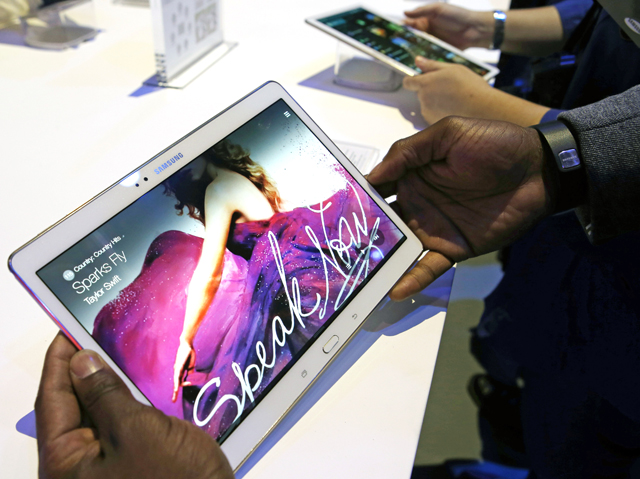NEW YORK — New tablet computers from Samsung will feature screens that are richer in colour than standard LCDs.
These screens, known as AMOLED for active-matrix organic light-emitting diodes, are already found in smartphones made by Samsung and a few other manufacturers. But until now, tablets haven’t used them because larger AMOLED screens are more difficult to produce.
Samsung Electronics Co. is trying to change that with its upcoming line of Android tablets, called the Galaxy Tab S. On Thursday, Samsung announced two such models, with screens of 8.4 inches (21.3cm) and 10.5 inches (26.7cm), as measured diagonally.
Samsung is the world’s second-largest maker of tablets, behind Apple and its trend-setting iPads. In recent years, Samsung has been gaining market share — at Apple’s expense — by offering a wide range of sizes and quality.
Earlier this year, it unveiled a “Pro” brand aimed at professionals. The “Tab” brand has been used on Samsung’s budget tablets and don’t come with a stylus, as Samsung’s “Note” tablets do. With the new screens, Samsung is elevating the Tab line to become its flagship tablet.
Besides producing richer colours, AMOLED allows tablets to be thinner and use less power because screens typically don’t require backlighting. But IHS analyst Sweta Dash said the performance gap between AMOLED screens and regular LCDs has narrowed, while AMOLED screens can cost 10 to 30 per cent more to make.
Samsung does have the advantage of making its own screens, and the South Korean company can afford to reduce profit margins on tablets if that boosts volume and reduces costs on the screen-production business. What it learns from making tablet screens might even help it one day make affordable AMOLED television sets.
The new tablets will have better screen resolution than last year’s Tab line. The new models will all sport displays of 2,560 pixels by 1,600 pixels, matching what’s found in the Pro series.
By comparison, Apple’s iPad Air is at 2,048 pixels by 1,536 pixels, for a density of 264 pixels per inch. Apple markets its displays as “Retina” and doesn’t believe more pixels will necessarily be discernible to the eye. Apple is expected to refresh its iPad lineup this fall.
Until now, iPad rivals have succeeded largely by undercutting Apple on price, and better hardware hasn’t been enough, said Rhoda Alexander, director of tablet and monitor research at IHS. AMOLED screens could change that, she said, because colours will pop out when compared side by side at a Walmart or a Best Buy.
